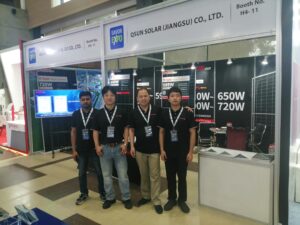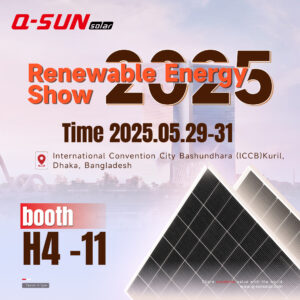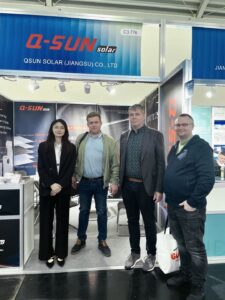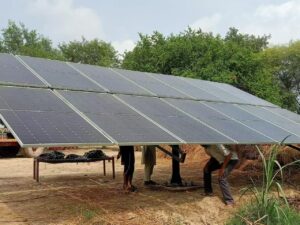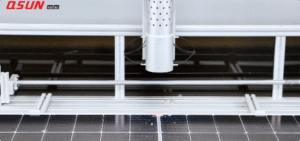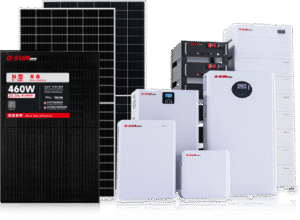In the wave of renewable energy, PV carports have risen like a shining star, lighting the path to a greener future. These carports cleverly integrate solar PV technology with traditional carports, using PV panels as a medium to create a beautiful picture of low-carbon, eco-friendly, and efficient innovation. While generating power, PV carports also provide shade and rain protection, significantly reducing the temperature of the vehicles.
Empowered by the Sun, Driving a New Life
The working principle of PV carports is simple. Solar panels installed on the roof of the carport absorb sunlight and convert it into direct current (DC) electricity. Then, an inverter converts the DC into alternating current (AC), which can be used to power the carport or supply electricity to devices like electric vehicle chargers.
The Dual Charm of Science and Aesthetics
Q-Sun Solar’s Topcon series modules, known for their excellent weather resistance and corrosion-proof materials, are the ideal choice for photovoltaic carports. During the installation of the modules, a professional waterproof layer is added between the PV panels and the frame, as well as between the frame and the ground, using high-quality sealing materials such as sealant or rubber gaskets to prevent moisture infiltration.
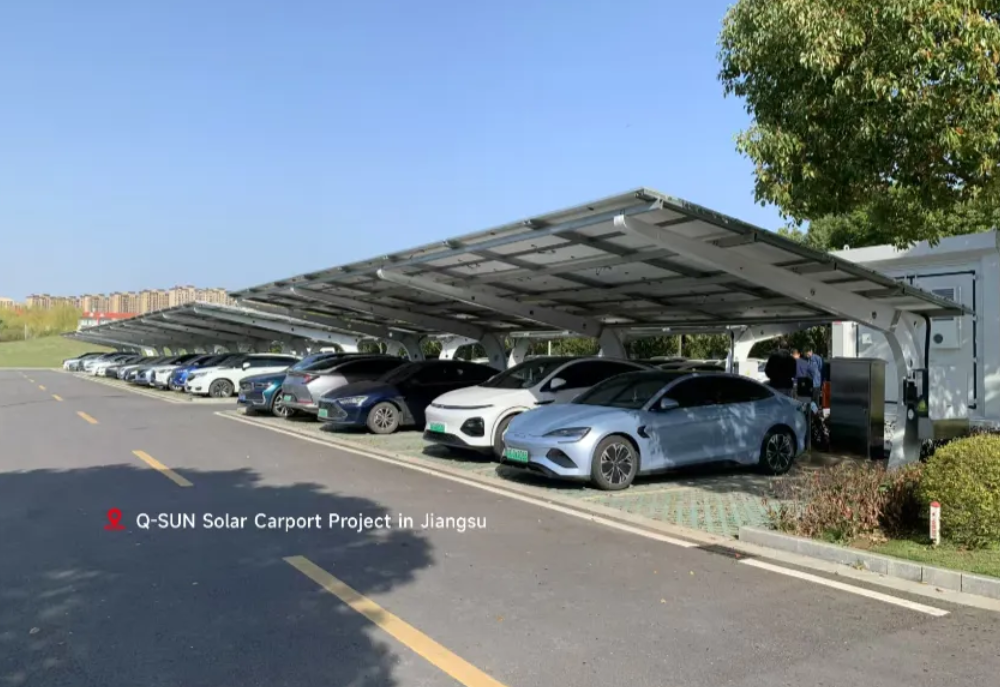
The New Trend of Photovoltaic Carports: Maximizing Space Utilization
PV carports come in various types, which can be selected based on individual needs.
By Column Number:
· Single-column PV Carport: Simple structure, high space utilization, providing great convenience for parking, and easy installation.
· Multi-column PV Carport: Made of aluminum alloy, it features a sturdy structure with higher safety and better wind resistance. Compared to single-column carports, it offers greater space utilization, though at a higher cost.
By Slope Shape:
· Single-slope PV Carport: Simple structure, easy installation, and ideal for north-south orientation to maximize sunlight exposure.
· Double-slope PV Carport: Centralized water drainage, more convenient to use in rainy weather, and suitable for east-west orientation to optimize rainwater discharge.
· Flat-roof PV Carport: Even design, with photovoltaic panels installed parallel to the ground, convenient for installation and ideal for limited spaces. However, attention must be paid to drainage design to ensure safety.
· Curved-roof PV Carport: Modern and aesthetically pleasing, featuring curved or wavy structures. While complex and more expensive, it offers excellent visual effects and superior shading performance.
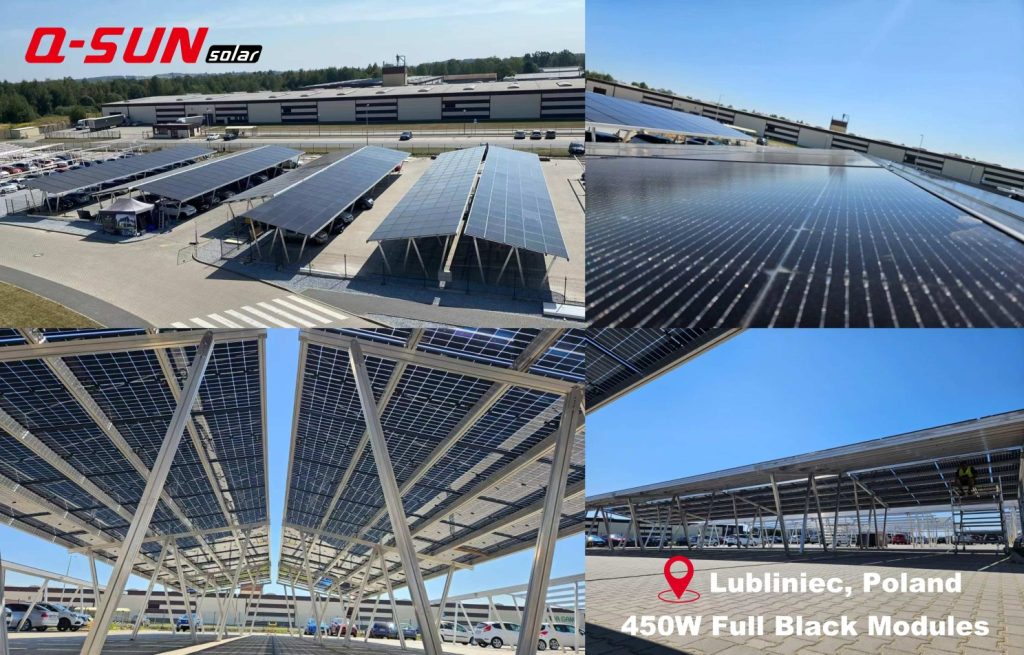
No matter the type, PV carports can meet personal needs while providing a green, eco-friendly energy solution for our lives.
A New Investment Trend, A Green Future
For owners, adding a PV carport not only enables self-consumption but also allows surplus electricity to be sold, creating reverse income—an excellent investment opportunity in today’s market.
With breakthroughs in energy storage technology and decreasing costs, PV carports will evolve toward greater intelligence and integration. This will allow them to better handle the instability of solar resources and provide more stable and reliable power supply. “PV + Carport” will become an essential component of future urban development, contributing to the global energy transition and sustainable development.


